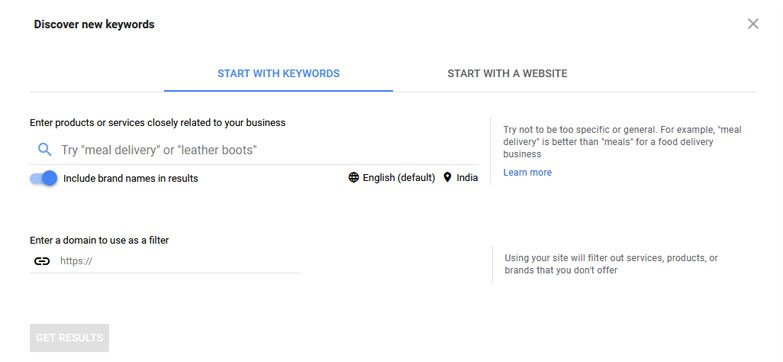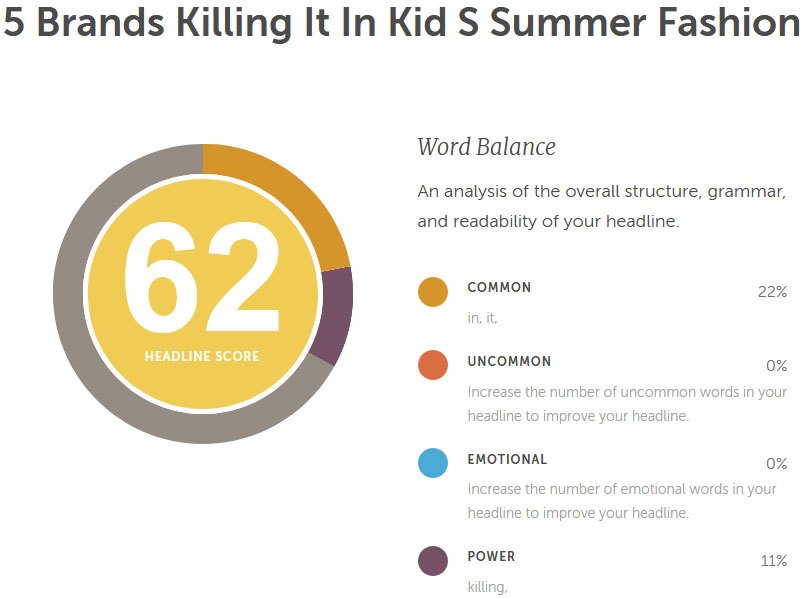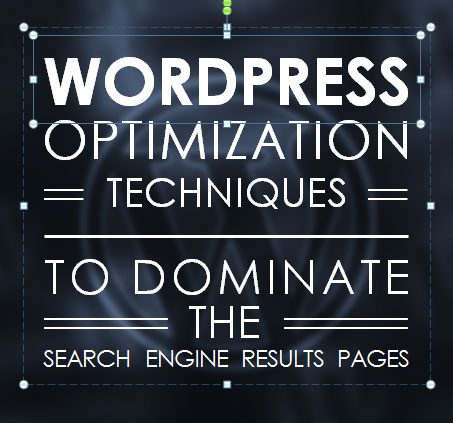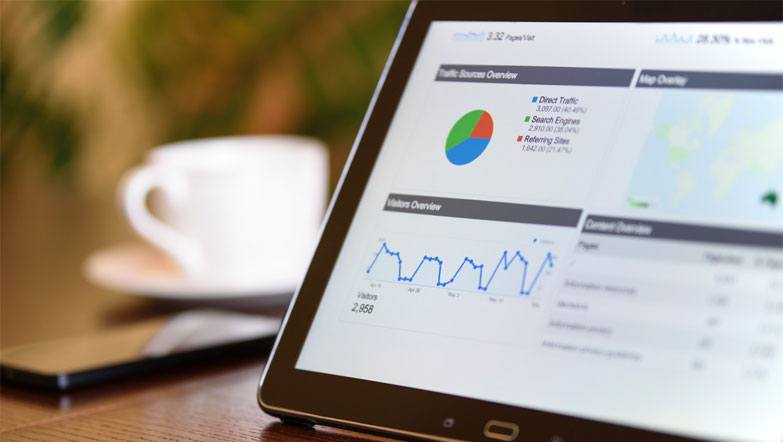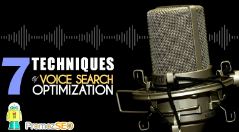5 Seemingly Simple but Costly Blogging Mistakes That Every Beginner Blogger Makes
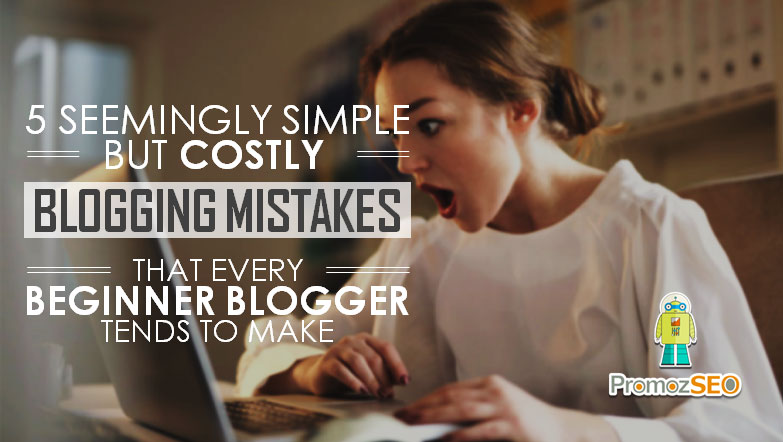
Are you starting your first blog? Do you know the blogging mistakes every beginner blogger makes, which ultimately result in heartbreaking failures?
Here in this blog post, we are going to discuss the 5 blogging mistakes that, if you know from the beginning, you can overcome and make your blog a stupendous success in relatively lesser time.
But before we start and dig deep into the blogging mistakes, let’s first have a brief look at why blogging is so much relevant and popular.
- Blogging has taken up the entire digital market by storm since its conception. It has been the best way to keep in touch with readers, audiences, and consumers while providing them with the information they seek.
- Blogging is a form of knowledge sharing, which allows individuals and brands to present themselves as more approachable to their target audience. It lets them closely connect with their readers and followers, help them in their queries, and attract them to their businesses in return.
- Blogging is also a powerful marketing tool, which has yielded overwhelming results over time, thus solidifying it as an effective and necessary form of digital marketing. If you are in an online business or even running a brick and mortar store without any online outlet, blogging is relevant and recommended for all. According to HubSpot, companies that prioritize blogging are 13 times more likely to get a positive ROI.
So, if you are still not employing blogging as a part of your digital marketing strategy, then you are losing out on a whole lot of benefits, which, in turn, is affecting your overall bottom line. Therefore, it’s imperative that you start blogging if you want your business to gain the desired traction in the digital market, which you have been dreaming about.
But though, blogging can be a powerful tool to market your business or website; it’s always not as easy as it sounds from outside.
If you have started blogging recently, then you may have been plagued with problems such as:
- No rankings on Google
- Less traffic to your website and blog
- Very few to no page views
- No recognition in the social media platforms
- No earnings from the blog
This makes you wonder, what is it that you are doing wrong to get such dismal results. If blogging is the answer to more traffic and recognition, then why is it not working?
First of all, gaining traction through blogging is a lengthy process. You should not expect to become a well-known brand from the very first month of blogging. It takes time and requires strategic planning to get targeted results.
But what you can guarantee from your very first content is a well-written and properly optimized blog post that is primed to gain the attention of the search engines as well as your audiences.
Now let’s break down the 5 seemingly simple but costly blogging mistakes that every beginner blogger tends to make, which, if done correctly, will make your blog a resounding success.
So, without any further ado, let’s get started.
# 1 Blogging Mistake – Not Having a Good Blog Design and Layout
A blog’s content though important is not the only thing, which can guarantee traffic. If your blog posts do not have the visual appeal and facilitate the ease of reading and navigation for your readers, then your visitors are sure to dwindle with time.
You need a blog design that can attract visitors, tempt interactions, optimize conversions, and leave a long-lasting impression.
The main features of a blog design, which you need to keep your eye out on to get the maximum out of your blog are:
- Organize all the information in your blog neatly and under categories and sub-categories for easy navigation. This method helps your users to directly look for related topics they want information on without trudging through all the other unrelated posts in your blog. This also means the reduced time required by readers to search for a specific topic they want. Less the hassle you can guarantee your readers, the more they will appreciate you for it.
- Ensure the readability of your blog content. Just clumping together a whole bunch of words is not going to work if you want your readers to engage. Your content should be spaced optimally to ensure a clutter-free reading experience. Use ample white space and narrower grids so that readers are not lost in the middle of words. As for the color of your text and the background, try to go with a good contrast that is easy on the eyes. The main goal here is to get a neat outlook that attracts readers and creates a positive impression.
- Another thing to ensure proper readability is to use legible typography throughout the blog. Fancy fonts may look good, but before you use them, make sure that they are also readable. An intuitive blog design without all the bells and whistles would go a long way to ensure your blog’s success.
- If you are posting on your blog regularly, then you will have a deluge of information in your blog, which can overwhelm readers on their first visit. So, to organize all the posts, the best method is to have the blog card layout. This layout represents each post in your blog in the form of a playing card. With important information like the main image, title, author, and blog excerpt in the card, it will allow readers to know what the post is all about while saving space and looking good.
- As part of the readability of your content as well as for SEO, having descriptive sub-heading to better portray the content makes your blog posts more focused and reader-friendly.
- Capturing leads is crucial for a business. So, having proper lead magnets as part of your blog layout is a must. Include CTAs at the start of your page or above the fold to ensure that you create an effective lead funnel. You can also go for the pop-up option where you can provide lucrative offers in exchange for actionable leads like emails.
There are several other tweaks that you can apply in your blog design to make it stand out, but these above-explained points are the basic to-dos, which will help your blog in the very first stage.
As your experience grows along with your blog and its audience, you can employ added design elements to spruce it up further. Till then, make sure you follow these basic blog design tips to start off.
# 2 Blogging Mistake – Not Doing a Detailed Keyword Research
An optimized blog post has better chances to gain more attention from search engines and readers who are looking for similar content. But what does it take to optimize your content?
The main ingredient for an optimized content is the “keywords”. Keywords are the search queries that users are typing on Google to look for what they want.
Search engines like Google crawl for these queries in your content to find out if it will answer the users’ queries or not. So, if you use relevant keywords meaningfully in your content, then Google may recommend it to the users whose queries match the keywords, thus earning you traffic.
Your blog posts are a means to provide solutions to your audience, and using the related keywords in it will assure that they are doing their job.
So, whatever content you are posting on your blog, thorough keyword research on the topic should be the very first step for doing a proper onpage SEO of your blog content.
The main to-dos with respect to keyword research and incorporating them into your content are:
- Use the Google Keyword Planner tool to find out all the related keywords on a topic. The found list of keywords may have the most searched ones as well as the less popular ones. After you analyze the keywords, their search volumes, and efficiency index, figure out which ones you will use for the various sections of your content.
- Over-optimizing your content, stuffing a huge number of keywords can be devastating for the blog, even can penalize it. So, stick to what is allowed and meaningful. Ideally, 1 to 2 percent of the total words in a content is the acceptable number of keywords. So let’s say, if you have a 3000 words blog post, then around 30 keywords used throughout the content is just the right proportion.
- Use the main keyword (primary or focus keyword in WordPress) in the SEO title and H1 of the content. Also, make sure that the focus keyword is used in the first sentence and the last sentence of the blog post, and that too as early as possible. Additionally, use the focus keyword in the content where it is required and meaningfully pertinent.
- Use other keywords that you have found from the Google Keyword Planner tool as H2, H3, and so on in the subheadings of the blog content. Do not use the same keyword repeatedly. Use variations of them, instead.
- Whatever keywords you use should blend well with the content you are writing. The blog post should be reader-friendly and not sound robotic.
- If meaningfully, you are not able to use keywords, then don’t fret but, do not force-fit them. Instead, just make sure the keywords you have used are contextually sprinkled throughout the blog post.
- Don’t go for the old school techniques. If you are using a high competitive keyword in your content, especially in the SEO title and H1, you must have a blog post that is related heavily to that keyword. If you are using a keyword just for the sake of its high search volume without having any supporting content, then Google will certainly penalize the blog, which I believe, you do not want.
If you are following the above rules to optimize your blog content, then rest assured your post will get the rankings in SERPs and bring the traffic as well. In the SEO business, knowing how to find and use the right keywords is half the battle won. So, hone your keyword research skills from day one to get the desired results for your blog.
# 3 Blogging Mistake – Not Writing Persuasive Blog Title and Headline
The internet is overflowing with multi-millions of blogs on hundreds and thousands of niches. In this competitive race, you need to have something extra to hook readers to your blog.
Blog titles are what sell the content. They represent your content in search engines, emails, and social media platforms. So, crafting intriguing blog titles is an essential job, which you need to master quickly to get the most out of your blog.
There are specific rules and some basic to-dos attached to creating a catchy, compelling blog title for your post. Let us list them for your easy reference.
- Always start with a “working title” for your blog post. Don’t go for a generalized one. Be specific with what you want to convey in your post. Hence, the title should clearly reflect the topic of the post. Blog title doesn’t have to be always a complete sentence, but it should be an accurate description of what is in the content.
- Your blog headline and title are the very first things, which a user sees on your post. So, they should have relevant keywords that match the user’s query. Therefore, place the primary keyword at the beginning of the blog headline and title. At the same time, also make sure that the language is human friendly and does not sound awful or robotic.
- Set clear expectations for your audiences. Means, they should get exactly what the title denotes. Remember, accuracy is always more important than a provocative blog title or headline. You can further streamline the title by adding specific information in brackets. For example, if you have a blog post containing an infographic about 5 steps of digital marketing, then the blog title should be “Digital Marketing Done in 5 Steps [Infographic]”. This helps users to assess the information easily and quickly.
- Make your titles pop up. Accuracy can also be achieved with a compelling language that users cannot help but click. For example, if you have a blog title like “5 Popular Brands for Kid’s Summer Fashion”, then you can pump it up by composing it like “5 Brands Killing It in Kid’s Summer Fashion”. To help you with this, you can use online free tools like “CoSchedule Headline Analyzer”.
- Keep your blog titles short and crispy. For title appearing in search engines, it is advised to keep it in less than +- 50 characters so that it does not get cut off while displayed in the SERPs. For social media and Facebook, shorter titles with a word span of 8-12 characters are more successful and are shared and re-tweeted more. Before writing the final blog title, conduct a few tests to know the title length that will perform best for your specific purpose. Try sounding the title out in your head to check if it is easily digestible for readers. The less mouthful your title, the better it is.
Your blog title represents what your post is all about. So giving an extra ounce of attention to them will serve you loads towards the success of your blog. Try brainstorming with your team and come up with blog titles that will best resonate with your audience while being snappy and eye-catchy.
# 4 Blogging Mistake – Not Using the Perfect Blog Image
Humans are visual beings, so using an image before a block of text always works better to grab their attention.
A meticulously put together blog post should always have at least one (preferably more than one) image that is related to the content as well as properly optimized for image SEO purposes.
One perfect image can impact profoundly on the viewership of your blog as well for Google to sit up and take notice.
The basic to-dos while using images in blog posts are:
- Do not just use any image right off the internet. Always double-check whether the image is copyright-free or not. Only use those that are copyright free. If you slip up here, Google won’t be very forgiving. The best option is to use a custom image that you have specifically created for the post. You can use software like “Adobe Photoshop” or online tools like “Canva” for this purpose.
- If creating a custom image from scratch is not your forte, then you can simply use images from Google, which are grouped under “labeled for reuse” or “labeled for reuse with modification” (under Google image search -> tools -> usage rights). Here, you can just take the image, add relevant texts to it, and finally convert it into a completely new image for your post. You can use online tools like “AddText” or “Canva” to do the same.
- There should always be one main image of a blog post, which will contain the title of the blog post as the text. This is the image your post will be associated with, in the miniature version of it on social media platforms.
- Along with the main image, each section of your content like the sub-headings should also have a related image. The image should not be a generic one but should represent the content below it. It can be an image explaining a process described in the content or examples for readers’ better understanding.
- An optimized image means a properly sized image that fits perfectly within the layout of your post’s body. So, before uploading an image to the blog post, take note of its dimensions and resize it accordingly.
- An image may contain a whole lot of unnecessary information like its EXIF data that increase its size. So, compress images before using them in blog posts. Use tools like kraken.io for this purpose.
- An image does not automatically name itself with respect to the blog topic. You have to do that manually. Use relevant keywords here. An image file name should describe the blog topic or, at the very least, a sub-topic. Things to keep in mind for an image file name are, use lowercase letters only, no stop words, and no special characters except for hyphen to separate the words.
- Same as image file name, always optimize the image “alt” attribute. It is the alternative title of the image and optimizing it is considered as a good SEO practice. Similar to an image filename, use lowercase letters here as well. Do not use hyphens to separate the words; normal space will do just fine.
- Lastly, you should always go for the branded images. Include your brand’s logo on the image to let people get acquainted with your brand.
Images can boost the popularity of your blog posts by many folds. So pay an extra bit of attention to this step of your blogging process.
There are tons of high-res copyright-free images that you can get for free from sites like Pixabay, Pixels, Unsplash, etc. Just apply all the steps mentioned above, and you will get an optimized image for your blog post nice and easy.
# 5 Blogging Mistake – Not Measuring the Performance Metrics of Your Blog
A blog takes a lot of nurturing and quite a long period of time to actually yield necessary SEO results and, thus, online recognition. But it does not mean that you will wait for a year or so to start evaluating its day to day improvements.
Start measuring the growth of your blog after the first month, even if it is tiny. This will not only guide you to an improved blog in the coming days but also give you an in-depth view of how a blog works and what changes to be made to make it even more successful.
The key performance indicators that you should measure for your blog are:
- The number of visitors – Finding out how your posts are faring among readers gives you an insight into what readers are reading and what they are looking for. Single out the most visited posts in your blog and figure out what they have in common. Then use that knowledge in your next post to increase its views.
- Lead generation – Your blog is a major portal for lead generation, which can help grow your business and earnings in the future. So, measuring the leads that you are generating through your blog gives you an idea of how your magnets are performing and what to change to create a better lead funnel for increased opportunities for your business.
- The number of subscribers – Subscribers are those readers who are interested in your content and have subscribed to your blog via email or other avenues. Knowing the number of subscribers you have gives you the measure of the quality and consistency of your content. They are the base readership of your blog and will help spread the word out to others online.
- Social media shares – It gives you the measure of what the users want to read about and which post is getting more attention and traffic through social media platforms. You can use this data to determine which content is working best and what is not, and further how to improve your next blog posts.
- Track inbound links – Inbound links are backlinks, which connect one page of your website from another site. They are used by search engines to determine a website’s authority and popularity. Different blog posts acquire different numbers of inbound links. So, measuring how many of your blog posts are attracting backlinks will give you a better idea of how to structure your content marketing strategy to get the most out of it.
There are various other essential metrics like page-views, average time on page, returning visitors percentage, etc. that you can assess through the Google Analytics tool. Keep your eyes on these metrics and structure your posts and strategies accordingly to get the best blogging output.
Wrapping Up
If you are here, it means you are now apprised of the 5 critical blogging mistakes and the steps you need to take to overcome them and make your blog work best for you.
Is it easy? Not really.
But it is indeed achievable. And you can do it too if you put together the right amount of hard work and adequate time.
Do you have an active blog? Is it getting you the results? What are the blogging mistakes you made in the beginning? How did you correct them? What are the strategies you have recently adopted to improve your blogging game? Are they working?
Please comment down below. We would love to know more about them.
An advanced All-in-One Digital Marketing Course.
Mentored by Mr. Soumya Roy, the Founder, CEO of PromozSEO Web Marketing Academy.
- Reasons Your Business Needs to be on Instagram - September 16, 2021
- 7 Reasons Your Business Should Invest in Professional Content Creation - August 12, 2021
- 5 Ways You Can Improve Your Website’s Existing Backlinks - April 30, 2021

